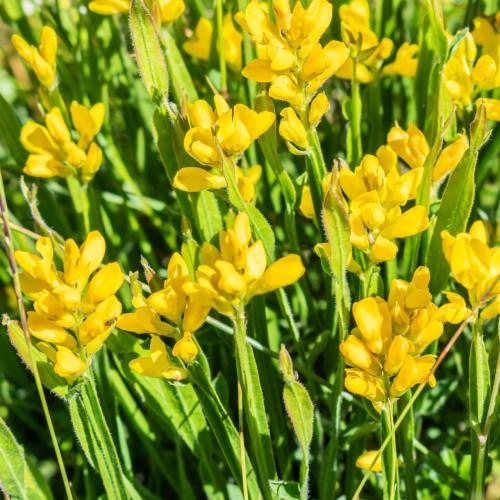
broom
Genista sagittalis
Cycle:
Perennial
Watering:
Minimum
Hardiness Zone:
4 - 9
Flowers:
Flowers
Sun:
Full sun
Leaf:
Yes
Growth Rate:
Low
Maintenance:
Low
Salt Tolerant:
Yes
Thorny:
Yes
Invasive:
Yes
Care Level:
Medium
watering
Water the broom (Genista sagittalis) once or twice per week during the growing season. The best time to water is in the morning so that the leaves can dry out during the day, reducing the chances of disease. Make sure the soil is moist, but not soaking wet. The plant should receive approximately 2 inches of water a week. Allow the top 3-4 inches of soil to dry out between waterings. Aim the water directly over the soil near the base of the plant. If the plant is well-established, reduce watering frequency to once per week.
sunlight
Broom plant species (Genista sagittalis) typically do best in sunny locations, receiving at least 6 to 8 hours of full sunlight per day. However, during the hottest months of summer, they can tolerate partial shade to protect them from scorching midday sun. If planted in full shade, this plant can suffer from stunted growth and weak foliage. In addition, during more extreme temperatures and drought-like conditions, they may require additional watering. It is best to locate this plant in a sun-drenched location for the majority of its growth and development.
pruning
Pruning of broom (Genista sagittalis) should be done in early spring or late winter before active growth begins. Pruning should also be done every couple of years or when the broom becomes congested with too many stems or branches. When pruning, only 1-third of the stems should be removed so that the plant maintains its natural shape. Dead or damaged stems should be removed as soon as they are noticed. Remove the top of each stem to shorten and promote branching, or prune them completely to the ground to rejuvenate the plant.
